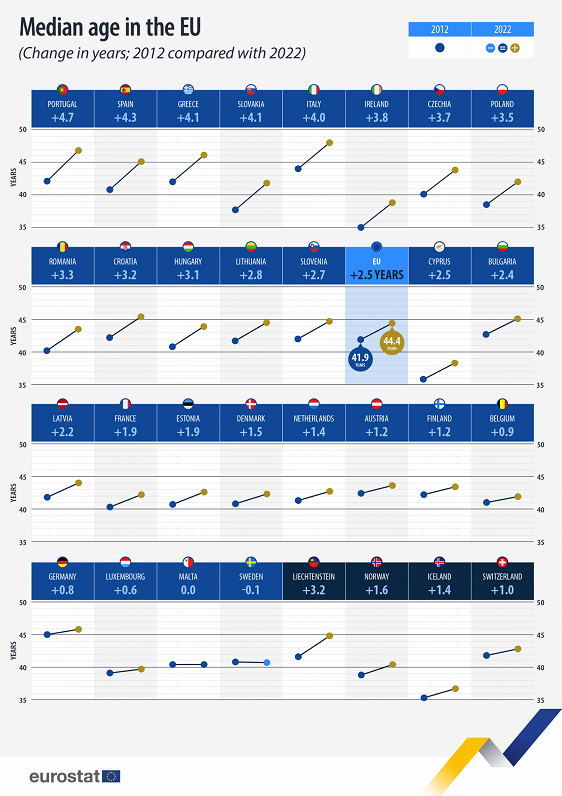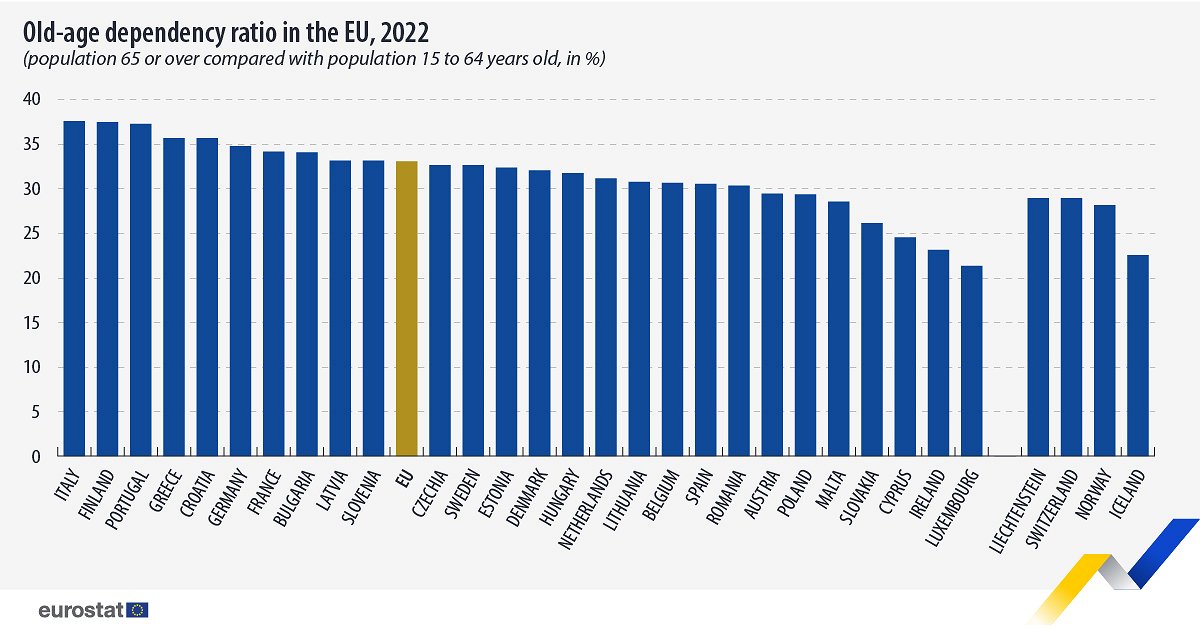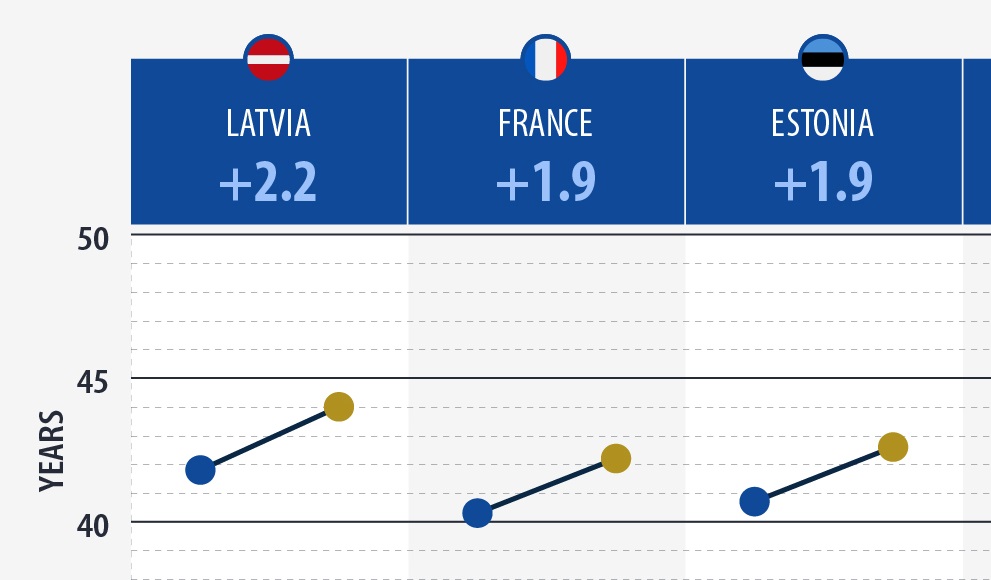The EU median age has increased by 2.5 years (on average by 0.25 years per annum) from 41.9 years in 2012. This means that half of the EU’s population was older than 44.4 years, while the other half was younger.
Across the EU countries, the median age ranged from 38.3 years in Cyprus, 38.8 in Ireland and 39.7 in Luxembourg to 48.0 years in Italy, 46.8 in Portugal and 46.1 in Greece. In total, 18 EU countries were below the EU’s median age.
Latvia sits very close to the EU average with a median age of 44 years exactly in 2022, up from 43.9 years in 2021. The figure is exactly 10 years older than it was in 1970 when the median age was 34 years. By the time of the turning of the millennium in 2000, that figure had risen to 37.9 years and ten years ago in 2012 it had reached 41.8 years.
Between 2012 and 2022, this indicator increased in all EU members except Sweden, where it decreased (from 40.8 years in 2012 to 40.7 years in 2022). In Malta, there was no change in the median age between 2012 and 2022, remaining at 40.4 years. In five EU countries, the median age of the population increased by 4 years or more. The median age in Portugal increased the most among EU countries (+4.7 years), followed by Spain (+4.3), Greece and Slovakia (both +4.1) and Italy (+4.0).

In addition to increasing median age, the EU´s old-age dependency ratio, defined as the ratio of the number of elderly people (aged 65 years and over) compared to the number of people of working age (15-64 years), also increased in 2022.
The old-age dependency ratio in the EU was 33% in 2022, 0.5 percentage points (pp) higher than in 2021, indicating an upward trend. Since 2012 (27.1%), this indicator has increased by 5.9pp.
This indicator varied among EU members but remained above 20% in all of them. The highest ratios were registered in Italy (37.5%), Finland (37.4%) and Portugal (37.2%), while the lowest were in Luxembourg (21.3%), Ireland (23.1%) and Cyprus (24.5%).
Compared with a decade before, the largest increases in the ratios were in Finland (+9.7pp), Poland (+9.6pp) and Czechia (+9.2pp) and the lowest in Luxembourg (+1.0pp), Austria (+3.1pp) and Germany (+3.3pp).
In this respect too, Latvia is very close to the EU average with a figure of 33.1% (up more than 5% on the figure of 27.6% in 2012)

According to Eurostat: "Demographic ageing within the European Union is likely to be of major significance in the coming decades. Consistently low birth rates and higher life expectancy are transforming the shape of the EU’s age pyramid; probably the most important change will be the marked transition towards a much older population structure, a development which is already apparent in several EU Member States."




























